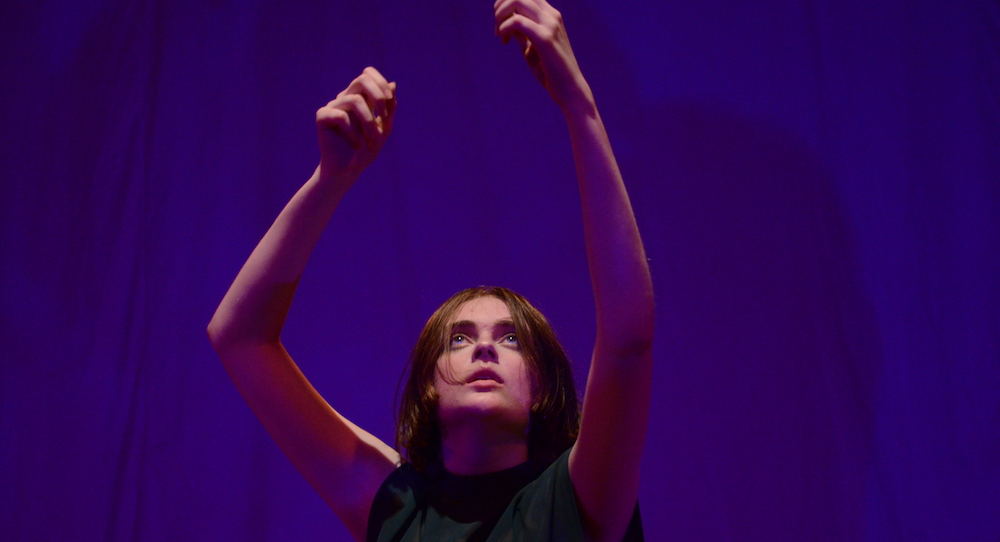Dancehouse, Melbourne.
31 August 2022.
There are nights when you think, I’ve seen all this before. This type of body, moving in this fashion, to this kind of soundscape. But you wait…and sure enough it emerges. For the record, I love it when dance does this — indirectly revealing its story and, in turn, illuminating yours.
With Amelia Jean O’Leary’s solo, Yinarr, it took a few minutes, but when the pattern became clear, the inner language became readable, and the work drew me in. Now, it resonated. Now, I could translate it. This is how the body speaks to us. In a code of sorts.
Altough I am not privy to the precise details of O’Leary’s journey, something of its complexity and struggle was mapped out in Yinarr. There is a moment, early on, when she appears to struggle against gravity, looking to uproot herself from forces seeking to contain her. Wrenching herself out of their clutches, she metamorphoses, her body taking on an array of standard feminine guises, as if searching for a form to feel at home in.
In the contemporary Western lens, this looks like the yearning for individual agency — that thing so often called freedom which, to others, may be regarded as exile. Not only does O’Leary slip between modes of identity, but she stays fluid. Call it agnostic. Always aware that benefit comes with cost.
Later, as she watches herself on the wall-sized video screen, these identities are flattened to representation. The breathing body becomes the pixelated stand-in. The distance between the savvy, screen version and the yinarr (aboriginal woman in the Gamillaraay language), is greater than mere technology or countable kilometres, and yet less than the thickness of skin.
Aside from the obvious identitarian overlays, Yinarr is a dance of the multiple self – the self in dialogue with its own idea of itself. Perhaps, if we were to seek an answer to the question ‘Who am I?’, Yinarr might reply, ‘The committee is still in session.’
Therefore, despite the work being easily pegged as one fitting within the standard canon of independent Australian contemporary dance, it manages to break through any exhaustion we may have with the formula — not by usurping it but by executing it with a certain passion and creativity. In this, it becomes a conversation with form, most notably the form of who we tell ourselves we are and the conflicting narratives we all hold within ourselves.
In presentation, Yinarr is simple (as opposed to minimal), and O’Leary’s choreography is similarly uncluttered. This restraint helps us peer more directly into the heart of the work and, there, behold ourselves reflected. This may strike some as banal, and maybe it is, but any work that gives you the clues to a non-literal language is something to applaud; even if only because ‘identity’ is so often used as a means of division, while the moving body remains universal.
By Paul Ransom of Dance Informa.

















